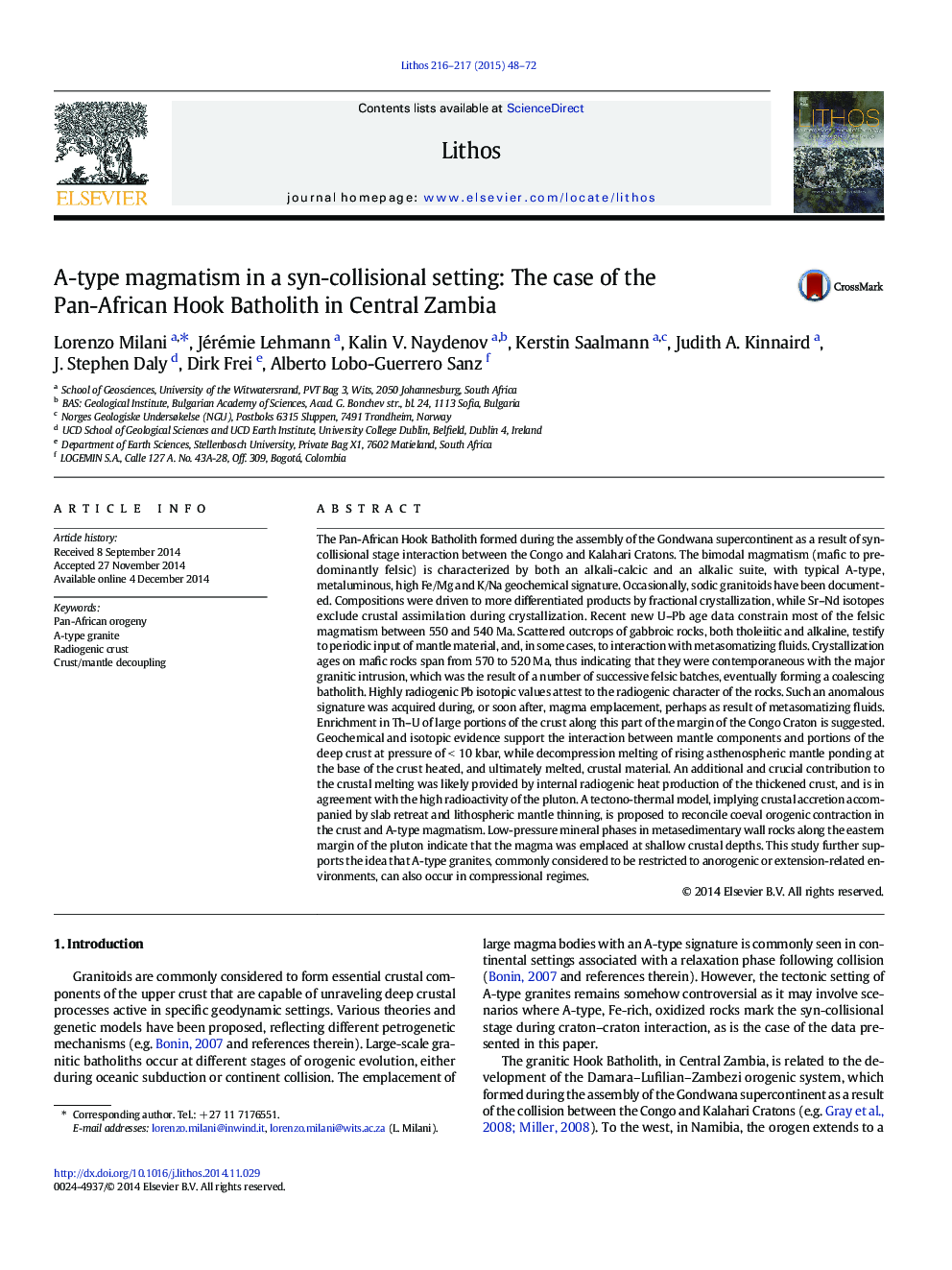| کد مقاله | کد نشریه | سال انتشار | مقاله انگلیسی | نسخه تمام متن |
|---|---|---|---|---|
| 6440761 | 1638668 | 2015 | 25 صفحه PDF | دانلود رایگان |
عنوان انگلیسی مقاله ISI
A-type magmatism in a syn-collisional setting: The case of the Pan-African Hook Batholith in Central Zambia
دانلود مقاله + سفارش ترجمه
دانلود مقاله ISI انگلیسی
رایگان برای ایرانیان
موضوعات مرتبط
مهندسی و علوم پایه
علوم زمین و سیارات
ژئوشیمی و پترولوژی
پیش نمایش صفحه اول مقاله

چکیده انگلیسی
The Pan-African Hook Batholith formed during the assembly of the Gondwana supercontinent as a result of syn-collisional stage interaction between the Congo and Kalahari Cratons. The bimodal magmatism (mafic to predominantly felsic) is characterized by both an alkali-calcic and an alkalic suite, with typical A-type, metaluminous, high Fe/Mg and K/Na geochemical signature. Occasionally, sodic granitoids have been documented. Compositions were driven to more differentiated products by fractional crystallization, while Sr-Nd isotopes exclude crustal assimilation during crystallization. Recent new U-Pb age data constrain most of the felsic magmatism between 550 and 540Â Ma. Scattered outcrops of gabbroic rocks, both tholeiitic and alkaline, testify to periodic input of mantle material, and, in some cases, to interaction with metasomatizing fluids. Crystallization ages on mafic rocks span from 570 to 520Â Ma, thus indicating that they were contemporaneous with the major granitic intrusion, which was the result of a number of successive felsic batches, eventually forming a coalescing batholith. Highly radiogenic Pb isotopic values attest to the radiogenic character of the rocks. Such an anomalous signature was acquired during, or soon after, magma emplacement, perhaps as result of metasomatizing fluids. Enrichment in Th-U of large portions of the crust along this part of the margin of the Congo Craton is suggested. Geochemical and isotopic evidence support the interaction between mantle components and portions of the deep crust at pressure of < Â 10Â kbar, while decompression melting of rising asthenospheric mantle ponding at the base of the crust heated, and ultimately melted, crustal material. An additional and crucial contribution to the crustal melting was likely provided by internal radiogenic heat production of the thickened crust, and is in agreement with the high radioactivity of the pluton. A tectono-thermal model, implying crustal accretion accompanied by slab retreat and lithospheric mantle thinning, is proposed to reconcile coeval orogenic contraction in the crust and A-type magmatism. Low-pressure mineral phases in metasedimentary wall rocks along the eastern margin of the pluton indicate that the magma was emplaced at shallow crustal depths. This study further supports the idea that A-type granites, commonly considered to be restricted to anorogenic or extension-related environments, can also occur in compressional regimes.
ناشر
Database: Elsevier - ScienceDirect (ساینس دایرکت)
Journal: Lithos - Volumes 216â217, February 2015, Pages 48-72
Journal: Lithos - Volumes 216â217, February 2015, Pages 48-72
نویسندگان
Lorenzo Milani, Jérémie Lehmann, Kalin V. Naydenov, Kerstin Saalmann, Judith A. Kinnaird, J. Stephen Daly, Dirk Frei, Alberto Lobo-Guerrero Sanz,